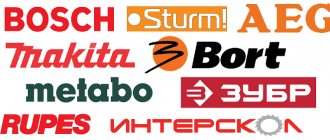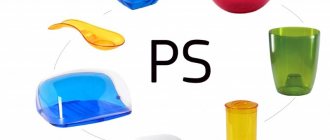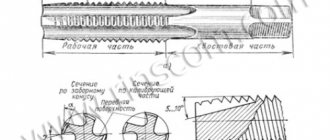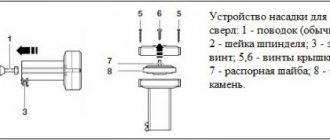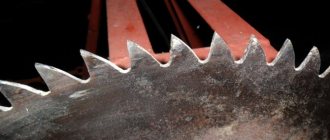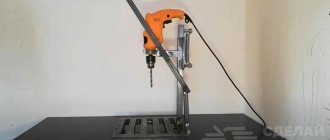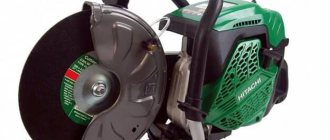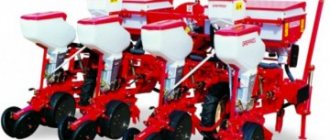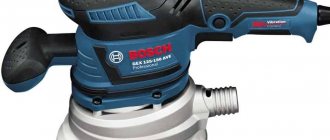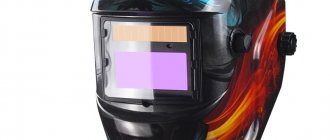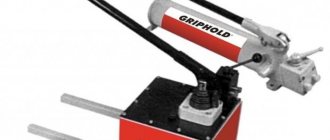Selection Criteria
Metal glue is an alternative to classical welding.
The advantages include ease of use and no need to have special equipment. You can work at home without experience, relying only on the instructions for use.
In order for the connection of metal to metal or other material to be reliable, the means must be chosen taking into account future operating conditions. For example, the composition must be waterproof or heat resistant.
You should also pay attention to:
- for the period, conditions for hardening;
- maximum, minimum temperature at which the glue retains its properties;
- method of application to the surface - spot or continuous;
- type, form of glue (liquid, paste, one or two-component);
- the maximum load-bearing capacity of the seam, its elasticity.
The surfaces to be bonded are also taken into account. Universal mixtures will not be the best solution. It is necessary to use specific glue for specified purposes.
The increased viscosity of the composition expands the scope of application.
Advantages of gluing
The use of metal gluing does not require personnel to have any distinctive professional skills or special equipment. After the operation, the seams are exceptionally tight and most often resistant to moisture. This technological operation can be performed at any place. Unlike traditional welding, adhesive seams, as a rule, are not subjected to additional mechanical processing.
In addition, gluing metal does not require much labor and this leads to a reduction in the cost of the unit.
This technology is used when it is not possible to use other methods of joining metal workpieces.
Types of adhesives for metal
The most popular are epoxy adhesives, which come in one-component and two-component types.
- One-component ones are immediately ready for application.
- Two-component requires dilution before use. The resin is mixed with a hardener and applied to the surface.
Epoxy comes in liquid or paste form.
The second option resembles a block of plasticine, which is kneaded with your fingers and applied to metal or other base.
Depending on the speed of hardening, adhesives can be slow or fast.
An example of an epoxy mixture is Poxipol. Available in two tubes.
There are adhesives based on acetone and plastic. They harden due to the evaporation of the solvent. Not suitable for surfaces that will become hot.
Cold welding on metal
Review of epoxy adhesives
Hot melt adhesive, produced in the form of rods, is actively used in needlework. They are tucked into a glue gun and melt under high temperature. By pressing the trigger, the molten rod is applied to the iron through the nozzle of the heat gun.
Product Description
In essence, Mannol 9905 Epoxy-Metal adhesive is an epoxy-based polymer composition. The base is complemented by a complex of fillers and additives. Additional components contain dissolved polymers and metal microparticles to enhance the effect of the base.
The polymer base has a high degree of adhesion to various surfaces, regardless of the material. During action, the glue impregnates the surface layer of the material, penetrating into microcracks, pores and roughness. This allows you to hold the parts as efficiently as possible after the product has completely hardened.
Also, the product shows high viscosity indicators. This feature allows you to glue vertical structures - the glue does not flow.
The finished formula consists of a filler and a hardener. The two elements of the substance are packaged separately. This prevents premature polymerization of the liquid and extends shelf life.
Stamps
Poxipol
The glue is heat-resistant, water-resistant, and quick-hardening. Withstands low temperatures, resistant to moisture, waterproof. Adheses well to many surfaces. It has a gray color, which makes it invisible on metal.
The Poxipol package contains two tubes - the main component and the hardener. Mix in a 1 to 1 ratio and immediately apply to the metal base.
After 10 minutes the layer becomes durable. After an hour, the part can be machined - drilled, cut, sawed. But, complete polymerization requires 24 hours.
Poxipol is inexpensive, but has disadvantages:
- does not connect thin bases end to end;
- Due to its thick form, it is applied only in a thick layer.
Weicon VA 110
The composition has officially confirmed environmental friendliness (NSF certification).
- The glue is moisture resistant;
- operating temperature -30 – +80 °C;
- because of the cyanoacrylate it contains, it is called superglue - polymerization from 20 to 50 s;
- maximum strength after 24 hours;
- shear strength – up to 20 N per mm2 after sandblasting;
- no color, completely transparent;
- in addition to metal, glues plastic, rubber, caoutchouc and others;
- Can be used for metal utensils that come into contact with food.
The composition is expensive: for a 12-gram tube you will have to pay a little more than 1 thousand rubles, while 60 g of the product costs more than 3 thousand.
Strong steel stick renewal composite 114 g
Has high adhesion and rapid polymerization (20 minutes). The basis is epoxy resins. The structure is plastic, easy to apply. The shape is a plasticine rod. Before application, knead with hands.
After polymerization, it is resistant to stress, chemicals, salts, alkalis, acids, and solvents.
Great for patching pipes. Difficult to access on the Russian market, not so cheap. It has disadvantages similar to Poxipol.
Weicon RK-1500
Two-component adhesive composition for metal. Connects iron, steel, aluminum, and other alloys. Strongly holds thin sheets of metal end to end.
- Also suitable for plastics and ceramics.
- The glue can be called high-temperature: it can be used from -50 to +130 °C, and overheating is allowed up to 180 °C for a short time.
- Tensile strength after drying up to 26 N per square meter. mm.
- 5 minutes after treatment, the adhesive joint reaches its initial strength.
- The activator can be added to one or both sides of the main component. This depends on the thickness of the applied layer - from 0.4 mm to 0.8 mm.
- The activator must be applied carefully. Due to the too liquid consistency, it may spread.
- It even glues substrates of different structures, the adhesion between which is minimal, for example, metal with glass, other smooth substrates.
EpoximaxX
It is an improved version of the classic epoxy EAF. The hardening time (3 hours), thermal resistance (120 °C) have changed, and operation in heated conditions has become possible. EpoximaxX does not change properties when moistened. Tensile strength is 60-80 MPa.
The consistency is liquid, so application with a brush is possible. Recommended for gluing large areas overlapping rather than end-to-end. It's inexpensive.
Bison Super Glue Gel
This is superglue for minor household repairs. It is universal and adheres to different materials. The consistency is similar to a gel, which makes it easier to use and prevents spreading.
- It hardens in one to two minutes, which allows you to adjust the position of parts after fastening and reduce the risk of finger gluing, as in the case of conventional superglue.
- By spreading it on the metal, small cracks are filled with glue. pores, which increases the reliability of the coupling.
- The tube contains only 3 g of substance, enough only for small jobs.
Improved bonding quality
Before gluing metal parts, it is necessary to carry out preparatory work, namely, it is necessary to clean it.
Both metal surfaces that will be connected must be cleaned of dirt, grease, and oils.
You can use detergents for this. After processing, they should be wiped dry; it would not hurt to blow the surface with dry air.
By the way, there are substances on the market called primers. After treating a clean surface with this composition, adhesion improves.
Heat-resistant adhesive type "300"
Withstands temperatures up to 1000 degrees. And the lower limit is 300 degrees. The components do not deteriorate and do not change properties even after prolonged exposure to temperatures. Used in ovens and other heating devices.
If materials differing in structure, for example, metal and brick, are glued together, then both of them must be thermally resistant.
For interior work, a composition with minimal toxicity is selected.
Some manufacturers add refractory clay or a reinforcement element to the composition of the products to increase the strength of the connection.
- A well-known brand is the Russian D-3142. Glues ceramic tiles to the metal base of furnace equipment. Withstands heat up to 850 °C for a long time.
- Moment Epoxylin. Produced by the German company Henkel. Epoxy is used as a basis. Bonds iron, ceramic and other fragile substrates.
Effective options
When visiting a hardware store to purchase glue for metal, your eyes literally run wide from the variety. In such a situation, it is difficult to choose the right product, which confuses most buyers. To avoid finding yourself in a similar situation, choose one of the most effective options presented below.
Epoxy
Adhesive mixtures made on the basis of resin and various fillers, among the advantages of which are:
- wear resistance;
- resistance to moisture;
- They can easily tolerate significant temperature changes.
Cold welding
The action of cold welding is based on the penetration of the adhesive mass into the material of the part, which, when solidified, creates an effect similar to a welding seam. Parts connected in this way are difficult to separate from each other, and the seam itself can withstand ultra-high temperatures.
Double-sided tape
A special tape coated with high-quality adhesive. It is used to connect both halves of metal parts and parts made of different materials. A structure fixed in this way is highly durable, and the joint successfully withstands external influences.
Anaerobic
A separate group of adhesives for metal, the work of which is based on the hardening of the adhesive only when access to oxygen is stopped. Such a connection becomes completely sealed, and its strength is not inferior to other types of adhesives.
Cyanoacrylate
Cyanoacrylate adhesive belongs to the category of universal products used for joining materials of various origins. Advantages of the mixture:
- strong seam;
- the mass hardens quickly;
- the seam remains stable over a long period of time.
Flaws:
- when the ambient temperature exceeds 100 °C, the strength of the connection is destroyed;
- not suitable for gluing parts between which there are large gaps.
Polyurethane
Polyurethane adhesive differs from other analogues in the amount of synthetic resins used to make the product. They make up more than 90% of the total mass of the substance, which is significantly higher than in other products for similar purposes. Thanks to this composition, the fastening of parts to each other is reliable and durable.
How to glue correctly
The metal surface is cleaned of traces of rust, stains, dirt, and dust. The use of solvents or gasoline is not recommended. Adhesion can be increased by pre-treatment with a primer.
Glue is being prepared. If it is two-component, both ingredients are mixed in the required proportions. It is applied to the iron, both bases are pressed against each other, placed under a press or clamped in a vice.
Stirring and applying epoxy is done with a spatula or plate. It is often included with the packaging.
There are gluing methods, depending on the quality of the seam that needs to be obtained.
- Static rigid bonding. It is used for structures that will not be subjected to large mechanical loads or expand (contract) with temperature changes.
- Deformation bonding. On the contrary, it is used to create an elastic connection on structures subject to regular loads. For example, stairs, car bodies, racks, signs and others. Suitable for fixing metals with different linear expansion coefficients when heated or cooled.
An epoxy agent is suitable for both methods.
If the part is located in conditions of high humidity or under water, the adhesive seam is covered with a layer of paint. Otherwise, it will absorb moisture and corrosion will begin to appear.
Cold welding
A diffusion-free connection is achieved by using so-called “cold welding” performed with epoxy components. At the same time, for this type of compound, both conventional viscous-flowing compositions, packaged in tubes or bottles, where there is an epoxy compound in one container and a hardener in the other, and a more convenient form in the form of solid bars have been developed.
Before work, the required amount of the composition is cut off from such a block with a knife, and with wet hands it is kneaded into a self-heating mass, similar to soft plasticine. The mass is pulled out into a thin cord and applied in the form of a seam to previously cleaned and degreased surfaces. The polymerization process starts at the moment when, with wet hands, so that the composition does not stick to them, the layers previously isolated with a special layer are mixed together.
Good to know > Transparent South Korean epoxy resin Ker-828
By the way, this same insulating layer, when stirred, itself enters into a polymerization reaction; it serves either as a filler or a plasticizer, depending on the type of problems that are solved by this type of cold welding.
This epoxy, crushed by hand, is applied in the form of a paste in a thin layer on both surfaces, previously degreased and sanded for better adhesion. Then, after applying and spreading the layer, the parts to be glued are pressed against each other so as to ensure their stationary state relative to each other, and already at the end of 40-60 minutes the pressing load can be removed.
Conditions for safe use and storage:
- Store the product in closed packaging in a dry place. Product storage information must be indicated on the product label. Optimal storage conditions: from plus 8 o C to plus 21 o C. – Storage at temperatures below 8 o C or above 21 o C can negatively affect the properties of the product.
- When removed from packaging, the product may become dirty during use. Do not return such a product in its original packaging. Henkel is not responsible for the quality of contaminated product or product stored under conditions other than those specified above.
What it is?
So, is this the same thing as a modern tool - molecular glue? On the construction market it is presented in the form of rods from 15 to 30 centimeters long with a diameter of about 1 centimeter, as well as in granules (see photo). Bonding with a solution is carried out at the molecular level, which ensures maximum strength of the joints. The advantage of the adhesive is that it can be reused and does not deteriorate at all after heating. Today, molecular glue is used for gluing rubber, metal, plastic, shoes, radio elements, glass, ceramics, as well as in the furniture industry.
Physicochemical characteristics
The composition of MANNOL 9905 adhesive-sealant is suitable for the following works.
Bonding surfaces made of the following materials:
- brass;
- copper;
- tin;
- lead;
- concrete;
- bronze;
- steel;
- plastics;
- composites;
- ceramics;
- tree.
Combinations of materials in free form are also possible.
The product is used for filling pores, holes, and restoring threaded connections.
Main varieties
First, let's look at what adhesives are in terms of chemical composition, level of adhesion to the surface, and also by area of use. Thus, according to the chemical composition, adhesive solutions can be divided into synthetic and natural, which in turn are divided into plant, mineral and animal. Based on the level of adhesion to the surface, there are five main categories of glue:
contact, which glue together the dry component after the volatile solvent evaporates;
PVA, which also glues the dry component after the water evaporates;
hot melt adhesives, which glue materials together after cooling;
molecular for plastic, rubber, metal and shoes, which bond at the molecular level.
Based on areas of use, adhesives are divided into solutions for:
soft floor coverings (linoleum, carpet, etc.);
hard floor coverings (parquet, laminate, etc.);
wall and ceiling panels;
ceramic tiles and tiles;
glass and other various coatings.
In order for adhesive solutions, including molecular rubber adhesives, to show their maximum capabilities, it is necessary to select an adhesive that is suitable for specific purposes. This will ensure the required degree of adhesion. Experts do not recommend using universal products, because the better a certain glue is, the fewer purposes it has. Before purchasing a specific adhesive composition, you must carefully read the instructions.
What it is?
So, is this the same thing as a modern tool - molecular glue? On the construction market it is presented in the form of rods from 15 to 30 centimeters long with a diameter of about 1 centimeter, as well as in granules (see photo). Bonding with a solution is carried out at the molecular level, which ensures maximum strength of the joints. The advantage of the adhesive is that it can be reused and does not deteriorate at all after heating. Today, molecular glue is used for gluing rubber, metal, plastic, shoes, radio elements, glass, ceramics, as well as in the furniture industry.
Main varieties
First, let's look at what adhesives are in terms of chemical composition, level of adhesion to the surface, and also by area of use. Thus, according to the chemical composition, adhesive solutions can be divided into synthetic and natural, which in turn are divided into plant, mineral and animal. Based on the level of adhesion to the surface, there are five main categories of glue:
contact, which glue together the dry component after the volatile solvent evaporates;
PVA, which also glues the dry component after the water evaporates;
hot melt adhesives, which glue materials together after cooling;
molecular for plastic, rubber, metal and shoes, which bond at the molecular level.
Based on areas of use, adhesives are divided into solutions for:
soft floor coverings (linoleum, carpet, etc.);
hard floor coverings (parquet, laminate, etc.);
wall and ceiling panels;
ceramic tiles and tiles;
glass and other various coatings.
In order for adhesive solutions, including molecular rubber adhesives, to show their maximum capabilities, it is necessary to select an adhesive that is suitable for specific purposes. This will ensure the required degree of adhesion. Experts do not recommend using universal products, because the better a certain glue is, the fewer purposes it has. Before purchasing a specific adhesive composition, you must carefully read the instructions.
Application
During assembly:
- 1. For best results, wash all surfaces (exterior and interior) with cleaner and allow to dry.
- 2. Apply a full turn of the product onto the threads of the male fitting, one turn from the start of the thread. Press the material against the threads and fill the grooves thoroughly. For larger threads and deep grooves, select the appropriate amount of sealant and apply a 360 o stripe of the product to the female fittings as well.
- 3. Using recognized techniques, assemble and wrench tighten the fittings until a perfect fit is achieved.
- 4. Properly sealed fittings instantly become airtight up to medium pressure values. In order for the joint to withstand maximum pressure and exposure to solvents, the product requires a minimum of 24 hours to cure.
When disassembling:
- Disassemble using traditional hand tools. In cases where it is not possible to use hand tools due to too long a meshing length or a large diameter (more than 30.5 cm), use local heating to approximately 250 o C. Disassemble while hot.
When cleaning:
- The cured product is removed by a combination of solvent soaking and mechanical cleaning with a wire brush. In cases where aqueous cleaning systems are used to clean surfaces before bonding, it is necessary to first check the compatibility of the cleaning solution with the product. This product is generally not recommended for use on plastics (particularly thermoplastic materials where it may cause stress cracking). Users are advised to first verify the compatibility of the product and such materials.
